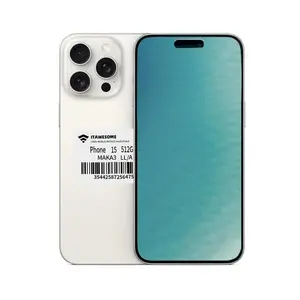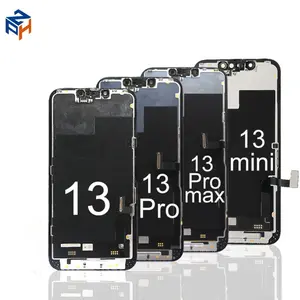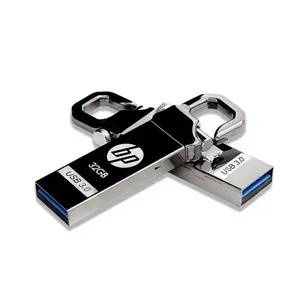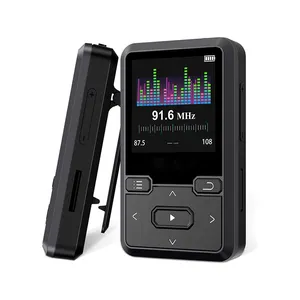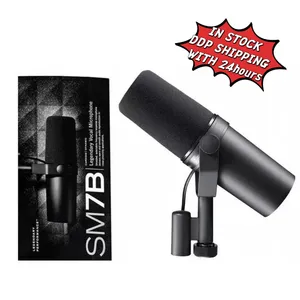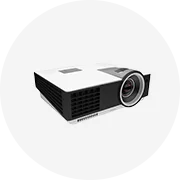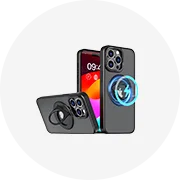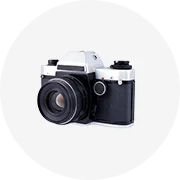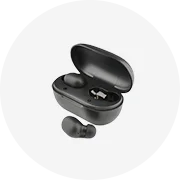Phổ biến trong ngành của bạn

Dễ dàng lắp ráp 3D hàng rào Bảng điều khiển hàn dây lưới hàng rào tấm
6,00 US$ - 15,00 US$
Đơn hàng tối thiểu: 100 Cái
Vận chuyển mỗi chiếc: 1.000,00 US$


Ngoài Trời Di Chuyển Miễn Phí Đứng Canada Hàng Rào Tạm Thời 6 Feet * 10 Feet Xây Dựng Được Sử Dụng Hàng Rào Tạm Thời Panels
7,89 US$ - 24,50 US$
Đơn hàng tối thiểu: 50 Bộ
Vận chuyển mỗi chiếc: 1.000,00 US$


Ngoài Trời WPC Hàng Rào Dễ Dàng Cài Đặt 1.8M * 1.8M Co-Đùn Nhà Vườn Hàng Rào Hồ Bơi An Ninh Riêng Tư WPC Hàng Rào Tấm
3,42 US$ - 3,78 US$
Đơn hàng tối thiểu: 100 Mét
Vận chuyển mỗi chiếc: 23,61 US$

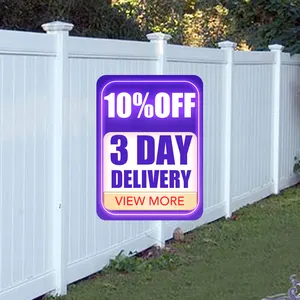
6 "X 8 'Trắng PVC Hàng Rào Vườn PVC Hàng Rào Trắng Vinyl Bảng Điều Chỉnh Hàng Rào
6,75 US$ - 7,50 US$
Đơn hàng tối thiểu: 1 Foot/Feet


Dễ dàng lắp ráp tùy chỉnh Úc giá rẻ chất lượng cao tạm thời di chuyển hàng rào tấm
8,90 US$ - 24,00 US$
Đơn hàng tối thiểu: 100 Cái
Vận chuyển mỗi chiếc: 1.000,00 US$



12 ft xách tay Heavy Duty mạ kẽm kim loại vòng bút gia súc corral chăn nuôi trang trại ngựa sân hàng rào tấm
12,69 US$ - 15,99 US$
Đơn hàng tối thiểu: 100 Mét vuông
Vận chuyển mỗi chiếc: 750,00 US$

Chất lượng hàng đầu di động vật nuôi bao vây bền và an toàn cho trong nhà/ngoài trời sử dụng-hàn hàng rào Bảng điều chỉnh
3,00 US$ - 5,00 US$
Đơn hàng tối thiểu: 50 Mét vuông

Sự kiện di động hàng rào tạm thời Bảng điều khiển năm chân cao Úc thép tạm thời hàng rào cho công trường xây dựng
5,80 US$ - 17,50 US$
Đơn hàng tối thiểu: 50 Cái

Phong cách cơ sở xây dựng trang web tạm thời hàng rào Bảng điều khiển di động 6 feet * 10 feet kim loại sắt khung vuông Canada hàng rào tạm thời
18,00 US$ - 24,00 US$
Đơn hàng tối thiểu: 200 Bộ
Vận chuyển mỗi chiếc: 31,85 US$

Thiết bị chăn nuôi USA 12ft trang trại hàng rào ngựa corral tấm sử dụng gia súc tấm để bán
25,00 US$ - 28,00 US$
Đơn hàng tối thiểu: 100 Cái

Thêm lớn nhiệm vụ nặng nề dây thép mạ kẽm lưới hàng rào chó Cũi chó cầm tay playpen
35,00 US$ - 65,00 US$
Đơn hàng tối thiểu: 50 Cái
Vận chuyển mỗi chiếc: 9,40 US$
Các tìm kiếm liên quan:
hàng rào gà điện cầm tayhàng rào điện bài pigtail bước hàng ràohàng rào gà loweshàng rào gà di chuyểnhàng rào gà điện úchàng rào gà để bánnhà máy trung quốc hàng rào đúc sẵnliễu chi nhánh hàng rào tấmhàng rào gà mạ kẽm điệnhàng rào nhà thépsắt kennel hàng rào tấm hàng rào chópvc tráng gà hàng ràohàng rào pannel gia súckim loại cũi chó chạy hàng rào tấmthỏ hàng rào gà lục giác

Bán buôn dê cừu gia súc hàng rào trang trại lĩnh vực hàng rào
10,75 US$ - 24,99 US$
Đơn hàng tối thiểu: 50 Cuộn
Vận chuyển mỗi chiếc: 53,98 US$

Gà Đường Hầm Cho Bên Ngoài Và Sân Xách Tay Gà Đường Hầm/Coop Thích Hợp Cho Gà Thỏ Vịt
12,10 US$ - 12,80 US$
Đơn hàng tối thiểu: 500 Mét vuông
Vận chuyển mỗi chiếc: 9,44 US$

An ninh trung bình nhiệm vụ tạm thời lưới hàng rào Úc Tiêu Chuẩn Xây dựng hàng rào tạm thời không đào hàng rào
2,30 US$ - 36,60 US$
Đơn hàng tối thiểu: 400 Cái

Chất Lượng Tốt Nhúng Nóng Mạ Kẽm Dây Cừu Giá Rẻ Gia Súc Lĩnh Vực Hàng Rào Trang Trại Hàng Rào Nhà Cung Cấp Dây Lưới Gia Súc Hàng Rào
30,00 US$ - 35,00 US$
Đơn hàng tối thiểu: 10 Cuộn
Vận chuyển mỗi chiếc: 68,06 US$

Sản Xuất Tại Trung Quốc Hot Bán Poulatry Vịt Lồng Xách Tay Thỏ Nhà Lồng Chất Lượng Cao Đi Bộ Trong Gà Coop Cho Bán
Sẵn sàng vận chuyển
134,00 US$ - 138,65 US$
Đơn hàng tối thiểu: 350 Bộ
Vận chuyển mỗi chiếc: 45,00 US$

Bán Buôn Trắng Tuyết Hàng Rào Nhựa An Toàn Hàng Rào Xây Dựng Net Lưới Cam An Toàn Hàng Rào
2,40 US$ - 2,60 US$
Đơn hàng tối thiểu: 3000 Kilogram
Vận chuyển mỗi chiếc: 1,79 US$

Chất lượng cao Úc hàng rào an ninh công trường tạm thời kim loại thép hàng rào tạm thời hàng rào cho công trường xây dựng
7,90 US$ - 17,80 US$
Đơn hàng tối thiểu: 50 Bộ
Vận chuyển mỗi chiếc: 12,00 US$

Hàng Rào Chuồng Gia Súc Chăn Nuôi Gia Súc Hạng Nặng 12 Ft Độ Bền Kéo Cao Được Sử Dụng Cho Hàng Rào Trang Trại Và Gia Súc Cầm Tay
65,00 US$ - 71,00 US$
Đơn hàng tối thiểu: 20 Cái
Vận chuyển mỗi chiếc: 3,04 US$

2024 trực tiếp nhà máy Chuỗi liên kết hàng rào nhúng nóng mạ kẽm Chuỗi liên kết hàng rào để bán
15,08 US$ - 17,38 US$
Đơn hàng tối thiểu: 200 Bộ

YC sáng tạo tạm thời hàng rào xung quanh hồ bơi Chất lượng cao gà Net hàng rào tạm thời cao cấp nhôm tạm thời hàng rào buổi hòa nhạc
14,80 US$ - 15,30 US$
Đơn hàng tối thiểu: 10 Bộ
Vận chuyển mỗi chiếc: 363,30 US$

Rất hữu ích hiệu suất chi phí tốt gia cầm cầm tay phạm vi mạ kẽm ống kim loại cừu hàng rào 1x1.2 mét
50,47 US$
Đơn hàng tối thiểu: 1 Centimét

Nhà Máy Trực Tiếp Điện Hươu Gia Cầm Hàng Rào Dây Lưới Mạ Kẽm Hàn Gà Giá Rẻ Bò Đường Sắt Hàng Rào Cổng Trang Trại Chăn Nuôi Hàng Rào
2,50 US$ - 3,50 US$
Đơn hàng tối thiểu: 500 Mét vuông

12 ft di động mạ kẽm kim loại gia súc corral chăn nuôi trang trại ngựa sân tấm Ngựa corral tấm giá rẻ trang trại hàng rào cừu hàng rào
12,69 US$ - 15,99 US$
Đơn hàng tối thiểu: 100 Mét vuông
Vận chuyển mỗi chiếc: 205,59 US$

Mạnh mẽ PVC tráng 3D hàn dây lưới hàng rào cho khu vườn và trang trại-Bảng điều khiển hàng rào Hàn
1,00 US$ - 3,00 US$
Đơn hàng tối thiểu: 100 Bộ

Úc hàng rào an ninh công trường tạm thời kim loại thép hàng rào hàng rào tạm thời cho công trường xây dựng
5,80 US$ - 17,50 US$
Đơn hàng tối thiểu: 50 Cái

Chất Lượng Cao Gia Cầm Trang Trại Hen Lồng Chạy Lớn Động Vật Ngoài Trời Kim Loại Coop Gia Đình Di Động Sân Sau Bé Gà Coop Nhà
Sẵn sàng vận chuyển
164,00 US$ - 168,65 US$
Đơn hàng tối thiểu: 290 Bộ
Vận chuyển mỗi chiếc: 45,00 US$

Chi phí thấp trang trại bò hàng rào đường ray cho gà, dê, bò hàng rào với dây thép mạ kẽm hàng rào sắt, tùy chỉnh bao bì kim loại
3,20 US$ - 6,20 US$
Đơn hàng tối thiểu: 300 Cuộn

Giá rẻ mạ kẽm hàn chăn nuôi cừu và Dê Kim loại cầm tay hàng rào tấm cho trang trại
12,69 US$ - 15,99 US$
Đơn hàng tối thiểu: 100 Mét vuông
Vận chuyển mỗi chiếc: 750,00 US$

An ninh trung bình nhiệm vụ tạm thời lưới hàng rào Úc Tiêu Chuẩn Xây dựng hàng rào tạm thời không đào hàng rào
5,80 US$ - 17,50 US$
Đơn hàng tối thiểu: 50 Cái
Vận chuyển mỗi chiếc: 100,00 US$

Tốt Nhất Người Bán Nhà Máy Bán Buôn Hen Nhà/Xách Tay Thương Mại Thép Gà Lồng Chạy/Sang Trọng Gà Coop Cho 15 Pcs Gia Cầm
Sẵn sàng vận chuyển
110,00 US$ - 139,00 US$
Đơn hàng tối thiểu: 350 Bộ
Vận chuyển mỗi chiếc: 45,00 US$

Hàng rào liên kết chuỗi tạm thời di động cho các công trường xây dựng
1,00 US$ - 3,00 US$
Đơn hàng tối thiểu: 100 Bộ

330ft động vật dây sắt lưới gia súc Bảng điều chỉnh trang trại hàng rào
12,38 US$ - 23,98 US$
Đơn hàng tối thiểu: 10 Cuộn

Giá rẻ mạ kẽm hàn chăn nuôi cừu và Dê Kim loại cầm tay hàng rào tấm cho trang trại
12,69 US$ - 15,99 US$
Đơn hàng tối thiểu: 100 Mét vuông
Vận chuyển mỗi chiếc: 750,00 US$

Xách Tay Rõ Ràng Dog Playpen Nhiệm Vụ Nặng Nề Dây Kim Loại Con Chó Hàng Rào Bảng Điều Chỉnh Ngoài Trời Cho Chó Lớn
18,00 US$
Đơn hàng tối thiểu: 100 Bộ

Chó Bút Kim Loại Hàng Rào Cổng Di Động Ngoài Trời Crate Enclosures 32 "Chiều Cao 16 Panel
15,50 US$ - 35,40 US$
Đơn hàng tối thiểu: 500 Bộ

Kim Loại Cầm Tay Vật Nuôi Lồng Bán Buôn/Mèo Chạy Hàng Rào Con Chó Playpen Tấm/Động Vật Con Chó Nhà Sân Sau Kennels Cho Bán
180,00 US$ - 189,00 US$
Đơn hàng tối thiểu: 200 Bộ

Úc tạm thời công nghiệp hàng rào mạ kẽm tạm thời đường hàng rào xây dựng công trường hàng rào kim loại tạm thời
5,80 US$ - 17,50 US$
Đơn hàng tối thiểu: 50 Cái
Vận chuyển mỗi chiếc: 26,82 US$

Bán Buôn Tự Làm Kết Hợp Con Chó Xách Tay Tập Thể Dục Chơi Bút Pet Playpen Hàng Rào Cho Chó Với 4 6 8 Bên Tấm
12,30 US$ - 18,37 US$
Đơn hàng tối thiểu: 500 Cái
Vận chuyển mỗi chiếc: 204,00 US$
Các danh mục hàng đầu
Giới thiệu về tấm hàng rào gà cầm tay
Alibaba.com cung cấp các sản phẩm 79 tấm hàng rào gà cầm tay. Có rất nhiều tấm hàng rào gà cầm tay lựa chọn dành cho bạn, chẳng hạn như dễ dàng lắp ráp, thân thiện với môi, và không thấm nước. Bạn cũng có thể chọn từ vườn, hàng rào vườn hàng rào, và trang trại tấm hàng rào gà cầm tay. Cũng như từ kim loại, thép, và nhựa tấm hàng rào gà cầm tay.Và bất kể tấm hàng rào gà cầm tay là video của cài đặt, cuốn sách hướng dẫn, hay 3d mô hình.
